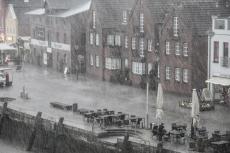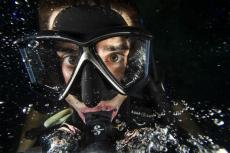Diagnosing the "bends" in turtles caught in fishing nets
Ultrasound technology is being used to determine whether turtles which have been caught in the fishing nets and brought to the surface have the "bends."
When sea turtles get trapped in fishing nets and are brought to the surface, they can suffer from gas emboli because their normal diving processes are disrupted. This can cause abnormal gas build-up in their organs.
To address this, marine veterinarians worldwide are developing methods to understand the possible consequences of this and to determine the most ideal treatment for them.
Using ultrasound technology
Katherine Eltz, a doctoral student at the University of North Carolina at Chapel Hill, has made significant strides in distinguishing gas levels over time in sea turtles. Collaborating with veterinarians, she has utilised real-time ultrasound technology to measure gas emboli in turtles as soon as they are brought to the surface-aboard the fishing vessels.
“The benefit of ultrasound is that we can see bubbles flowing through vessels or stationary in tissues. The portability of ultrasound means that it can be brought onto fishing boats, which we took advantage of to collect half of the data used in this project,” she explained.
It was Eltz’s collaborators from the Oceanogràfic Foundation who first reported the occurrence of decompression sickness in turtles.
After examining all the ultrasound data collected—obtained from two experimental groups—she concluded that the brightness of the ultrasound could be used as a quantitative metric to determine whether the turtle needed any hyperbaric oxygen treatment, or whether it could be released.
“The largest task still at hand is to work towards standardising the acquisition of the ultrasound data collected for this project,” she said.
“Now, I can work with veterinarians to help adjust their methods, including improved image processing to standardise the data in post-processing.”

























